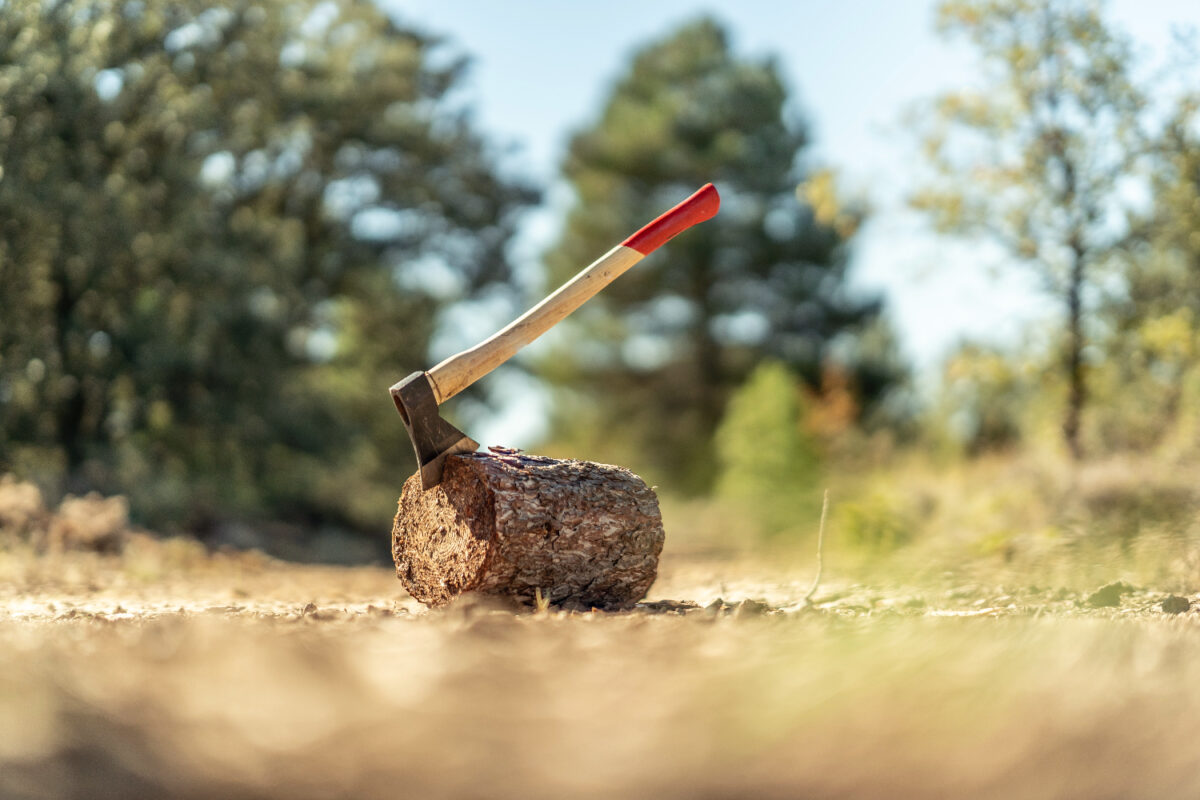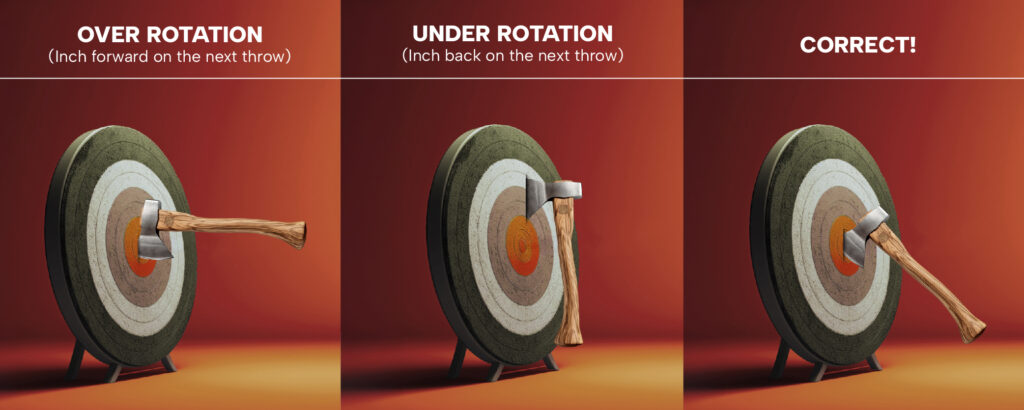How to Throw An Axe For Dummies (And Impress Everyone)

What is the trick to axe throwing?
Who would’ve thought you’d be throwing an axe, right? Whether you’re a total newbie or just getting the hang of it (and maybe feeling awkward), you might wonder: what’s the best way to throw an axe without looking like a rookie?
Don’t worry! We’ve created this guide to help you master the technique. Plus, if you’re nearby, we invite you to practice axe throwing in New Hampshire at Keene Axe House. Ready to look like a pro? Here’s what we’ll cover:
✔️ What you need to get started
✔️ How to throw an axe like a pro
✔️ Common mistakes to avoid
What you need to get started
The right equipment

It’s all about the axe. Not all axes are created equal, and here’s why: hatchets are small with short handles, typically used for chopping wood. Throwing axes, on the other hand, have longer handles and heavier heads, designed specifically for precision and power.
When choosing an axe, there are a few key factors to consider: balance and the blade. The best throwing axe has sharp edges to help it stick to the target every time. A well-balanced axe properly distributes weight, reducing wrist fatigue and improving your throw.
Safety first: Axe throwing do’s and don’ts
Now, let’s get serious for a moment—safety is key! In addition to having the right axe, it’s essential to understand and follow basic safety measures to ensure your well-being and help you get the most out of your axe-throwing experience.
| Do’s | Don’ts: |
– Listen to the safety briefing. – Wear closed-toe shoes. – Respect and follow the lane rules. – Stand behind the throwing line when it’s someone else’s turn. – Keep a clearance area of at least 6 feet around the target. | – Don’t overstep the throwing line. – Don’t retrieve axes until authorized. – Don’t throw simultaneously. – Don’t attempt trick shots without approval. – Don’t use damaged axes. – Obvious, but don’t throw an axe if someone is in front of you or near the target. |
Step-by-step guide: How to throw an axe like a pro
Step 1: The perfect stance

Your stance is the key to a successful throw. Begin by standing with your feet shoulder-width apart to maintain balance. Keep your weight evenly distributed, and bend your knees slightly to stay relaxed and ready to move.
Position your non-throwing foot forward, pointing straight ahead, while your throwing foot should be slightly behind, in line with your throwing arm. This setup will provide the stability and control you need for an accurate throw.
Step 2: Grip the axe correctly
Different types of throw
Double-handed overhead throw

The double-handed overhead throw is one of the most powerful and controlled techniques in axe throwing. You gain better stability and precision by using both hands to grip the axe.
- Static (Difficulty: 🪓)
The static double-handed overhead throw is the basic technique. Grip the axe with both hands and raise it above your head. While simple, it requires control to ensure the throw is accurate and smooth.
- Step Throw (Difficulty: 🪓🪓)
The step throw takes the basic technique further by adding a forward step as you throw. By stepping with your opposite foot, you use your body’s momentum to generate more power and precision.
Single-handed throw

The single-handed throw is one of the most effective techniques to master when learning how to throw an axe one-handed. This technique requires precision, control, and strength, using only one hand rather than two.
- Static (Difficulty: 🪓🪓🪓)
The movement involves raising the axe to shoulder height or slightly above, with your arm extended straight. From this position, throw the axe forward smoothly, maintaining control over your wrist and arm throughout the throw.
- Step Throw (Difficulty: 🪓🪓🪓🪓)
The step throw follows the same basic principles as the static throw but adds movement to generate more power. As you throw the axe, step forward with your opposite foot. This step helps to increase both speed and energy in your throw.
Step 3: Aim like a pro

Aiming is crucial for hitting the bullseye and improving your accuracy. To aim like a pro, focus on the target and align the axe with your intended spot using your dominant eye. Keep your stance steady and grip firm, ensuring the axe is positioned correctly before you throw. As you release, stay locked on the target and let the axe’s spin take over.
Step 4: The throw
The key to throwing an axe well is smooth, controlled arm movement. Begin by pulling the axe back, keeping your arm straight and your wrist firm. Use your shoulders and torso to generate power rather than relying solely on your arm.
Keep your wrist straight and avoid jerking or twisting in your arm to maintain control and accuracy. With practice, you’ll develop a consistent throw that combines power and precision.
Step 5: Analyze and adjust
Missed the target? It happens! Take a second to think about what went wrong. Was your aim off, or did the spin feel off? Adjust your stance, grip, or technique, and give it another shot. Small tweaks can make a big difference, so keep practicing, and you’ll hit that bullseye in no time.
“Throw” away these mistakes
Why might your axe not stick to the target?

The perfect throw
Mastering the perfect throw depends on finding the right balance between distance and rotation. Position yourself at the right spot so the axe completes a full rotation and hits the target blade first.
Under-rotation
You may be standing too close if the axe strikes the target with the handle or doesn’t fully rotate. Step back slightly to give the axe more room to complete its spin.
Over-rotation
If the axe over-rotates and the back of the blade hits the target, you’re probably too far away. Move a bit closer to reduce the spin.
Misaligning your grip or stance
A properly aligned grip and stance are essential for a controlled throw. Gripping either too tightly or too loosely can affect your aim, and an unsteady stance may lead to losing balance mid-throw.
Maintain a firm but relaxed grip, position your feet shoulder-width apart, and keep your throwing arm aligned with the target. These minor adjustments to your grip and stance can make a big difference in accuracy and control.
Ready to try these tips? Put your skills to the test at Keene Axe House!
At Keene Axe House, our skilled instructors are here to help you perfect your throw, whether you’re a complete beginner or a seasoned axe-throwing fan. It’s the ideal place to sharpen your skills!
FAQs
Is axe throwing safe for beginners?
Yes, axe throwing is safe for beginners when proper safety measures and guidance are followed.
Is axe throwing difficult?
It might feel difficult at first, but with practice, you’ll quickly improve your technique and accuracy.
Do you need to be strong for axe throwing?
No, strength isn’t as important as technique and form. Precision and control are key.
How far away do you stand for axe throwing?
The standard distance is typically between 12 to 15 feet from the target, depending on the facility or competition.
Do you need two hands for axe throwing?
You don’t need two hands, but using both offers more control and power, especially for beginners.
What is the easiest axe to throw?
The easiest axe to throw is one that is lightweight, balanced, and has a short handle, making it easier to control.

